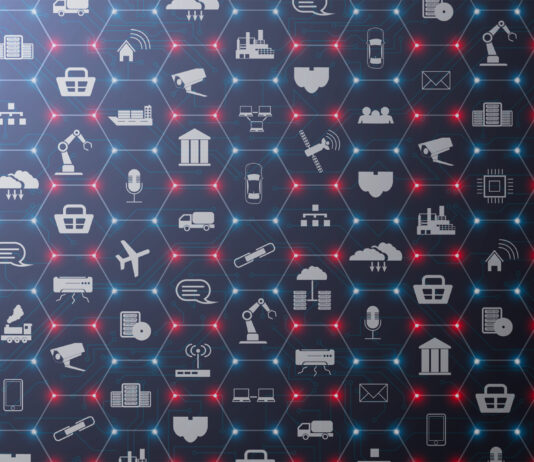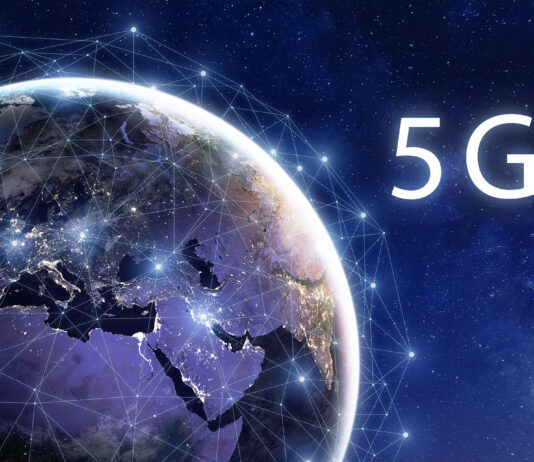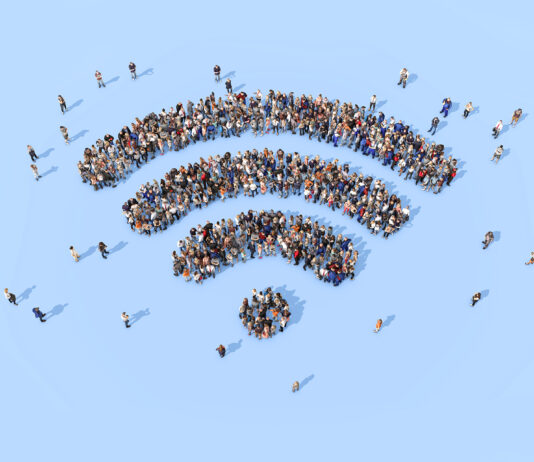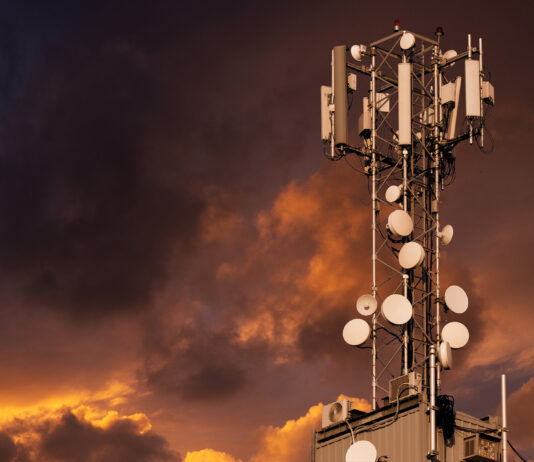Recently, in the science journal Nature, Google claimed ‘quantum supremacy’ saying that its quantum computer is the first to perform a calculation that would be practically impossible for a classical machine. This quantum computing breakthrough brings us closer to the arrival of functional quantum systems which will have a profound effect on today's security infrastructure. How will quantum computing affect the security of 5G technologies currently being developed and deployed?
Last spring we suggested that the emergence of quantum internet connectivity and computation, expected sometime in the next decade, poses numerous new cryptography and cybersecurity challenges for 5G security.
MIT offers...
When microwave ovens first arrived on the market in 1967 they were met with public skepticism. Perhaps it was because, not long before, the same technology now promising to safely cook consumers’ evening meals was the backbone of a military radar. Perhaps it was the $495 price tag (more than $3,700 in today’s money).
Whatever the reason, in the early 1970s the percentage of Americans owning a microwave was tiny. By 2011, it was 97%. What changed?
Trust and convenience.
When microwave technology was first released, it was difficult to trust. Cooking without using heat? It was simply too alien. In 1973,...
The timeline of human history is marked by inflection points of major technological advancement. The plow, the printing press, the telegraph, the steam engine, electricity, the telephone, the internet: each of these breakthroughs precipitated tectonic shifts in how people lived and worked. Now, in the early part of the 21st century, we stand witness to the birth of a new industrial revolution built on 5th generation cellular technology - 5G network.
As the name implies, 5G network follows a developmental chain. First came 1G, the first generation of cellular communication that freed us to make voice calls without being tethered...
NFC is a short range two-way wireless communication technology that enables simple and secure communication between electronic devices embedded with NFC microchip. NFC technology operates in 13.56 megahertz and supports 106, 212, or 424 Kbps throughput. There are three available modes of NFC communication:
Read/write (e.g. for reading tags in NFC posters)
Card emulation (e.g. for making payments)
Peer-to-peer (e.g. for file transfers)
There is no need for pairing code between devices, because once in range they instantly start communication and prompt the user. NFC technology is power efficient - much more than other wireless technologies. The communication range of NFC is approximately...
Radio-Frequency Identification (RFID) is a technology commonly used for identification, status administration and management of different objects. It is important for people identification, as it is commonly deployed in the latest biometric passports. It operates in several frequency bands like Low frequency band from 125 kHz to 134 kHz, High frequency band with 13.56MHz working frequency, Ultra-high frequency band with 433 MHz working frequency and 860 - 960 MHz sub-band.
In Ultra-high frequency bands there are two types of RFID systems—Active and Passive.
Active RFID system operates on 433 MHz radio frequency and on 2.4GHz from Extremely High- Frequency Range. It supports...
The Wi-Fi represents wireless technology that includes the IEEE 802.11 family of standards (IEEE 802.11a, IEEE 802.11b, IEEE 802.11g, IEEE 802.11n, IEEE 802.11ac, etc.). Within 50m range, it operates in 2.4 GHz and 5GHz frequency bands,.
This technology was developed for wireless networking of computer devices and is commonly called WLAN (Wireless Local Area Network), where the communication is realized between wireless routers typically connected to the Internet and other wireless nodes within its range.
In correlation with performances of specific IEEE 802.11 standards, different data rates are enabled and their theoretical throughput is 11 Mbps (IEEE 802.11b), 54 Mbps (IEEE...
Bluetooth is short-range wireless communications technology based on the IEEE 802.15.1 protocol. It works in a crowded license free 2.4 GHz frequency band and shares this resource with many other technologies.
Bluetooth is the optimal solution for establishing small wireless networks called Piconets, by connecting two Bluetooth devices. One of these nodes is Master that can be connected via Bluetooth link to 7 other Bluetooth devices—Slave nodes in Personal Area Network (PAN). Typical data rates are 1-3 Mbps.
The newest versions of Bluetooth is known as Bluetooth Low Energy (BLE) or Bluetooth smart.
It is important to note that Bluetooth and BLE...
Zigbee technology introduction
Zigbee is wireless PAN (Personal Area Network) technology developed to support automation, machine-to-machine communication, remote control and monitoring of IoT devices. It evolved from IEEE 802.15.4 wireless standard and supported by the ZigBee Alliance.
IEEE 802.15.4 standard determines specifications for the physical and data link layer and Zigbee Alliance provides standards from network layer to application layer. While Zigbee determines the contents of the transmitted message, the 802.15.4 standard provides details about the robust radio communication and medium access control.
The Zigbee Alliance, as a non-profit association, develops open global Zigbee standard for use in the Internet of Things...
I get accused of focusing too much on 5G as the only future IoT connectivity option. I do write a lot about how 5G will revolutionize our society, become the most critical of critical infrastructures and about security threats with 5G. I see 5G, with its low latency, high bandwidth, network slicing and ubiquitous coverage becoming the foundational capability for mission critical industrial, agricultural, financial, medical, education, energy and transportation, even military and emergency services IoT communication needs.
That’s not to say that 5G is the only IoT connectivity option. There are plenty of others.
IoT applications have some common requirements...
In 1956, at a workshop on the campus of Dartmouth College, in Hanover, New Hampshire, the field of artificial intelligence (AI) was born. Attendants were buoyant. MIT cognitive scientist Marvin Minsky was quoted as saying, "Within a generation the problem of creating 'artificial intelligence' will substantially be solved."
This prediction turned out to be over zealous, but Minsky and his colleagues believed it wholeheartedly. What, then, is different today? What makes the current dialogue about AI more relevant and believable? How do we know that this is not another case of humans over estimating the development of technology?
For one thing,...
Not even 30 years separate us from the end of the Cold War. Yet, we appear to be witnessing the emergence of a new one, a technology Cold War between the United States and China. This time, instead of a ‘red under the bed’, the US government has declared there is one at the back door. It accuses Chinese technology companies of deliberately building vulnerabilities into their tech, allowing the Chinese to access and control the 5G critical infrastructure, and through it the connected devices and machinery at will.
Headlines are dominated by the case against Huawei, and debate continues...
Emerging Technology and Geopolitics of 5G
There are several reasons emerging technology is a highly competitive industry, notwithstanding the race for intellectual property that can be licensed by burgeoning markets for revenue. A first-mover advantage is often a way to lock in relationships that can lead to long-term infrastructure commitments, integration support services, and service delivery platform development. As the adage goes, “Whoever owns the platform, owns the customer.” This race to be the first to establish technological platforms and lock-in their customers is increasingly becoming politicized. And 5G, the next generation of cellular mobile communications technology, is the best...
Don’t let the “5G” in the title confuse you. This post is not only about the telcos’ core networks, but about the 5G security and privacy issues in our (very) near, and very different future that 5G will enable. In the 5G-enabled massive Internet of Things (mIoT) world we’re about to find ourselves in, we are expected to have 1000 devices connected for every person… These devices will be the components of the ‘5G operating system’ for our smart cities, our industry 4.0, our smart homes, smart transportation, smart healthcare, and much more. To enable this future, we will...
More than half of the world’s population lives in cities. The UN estimates that by 2050 that proportion will be 68% - more than 6 billion people living in high-density conditions. This raises significant challenges. What is the best way to ensure that human needs are met in a fair and equitable way? How will we face challenges like resource strain, waste and pollution management, traffic congestion and connectivity?
In response to these wicked problems, cities are increasingly relying on smart technologies to foster greater efficiency and sustainable growth. These interventions do not, however, come without their own complications. Just...
Getting smart about security in smart systems
Smart used to be something we called people or pets. It wasn't a term one would use to describe one's hairbrush. That is changing, of course, in an era of accelerating digital transformation. Now we have smart homes, smart cities, smart grids, smart refrigerators and, yes, even smart hairbrushes. What's not so smart, though, is the way the cybersecurity and cyber-kinetic security risks of these systems are often overlooked, and with new horizon technologies like 5G, these problems are set to grow exponentially.
Cyber-physical systems and the smartification of our world
Cyber-connected objects have become...


















